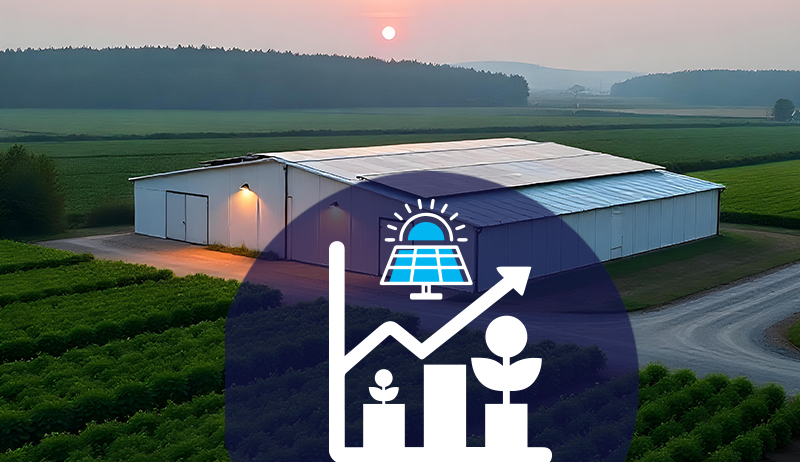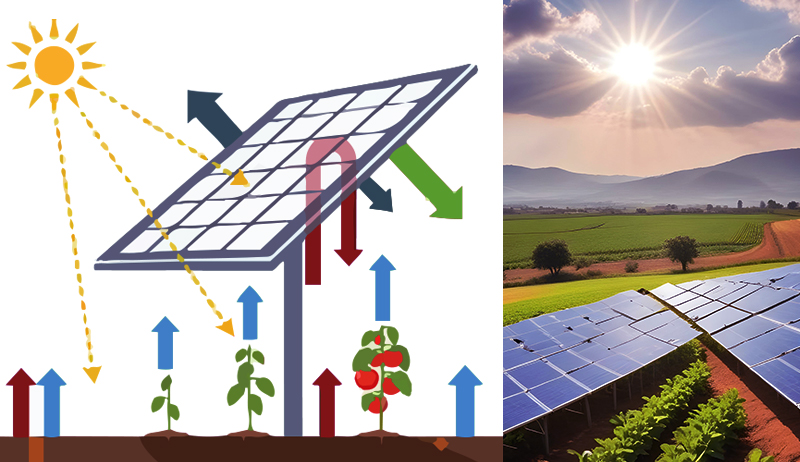Harnessing the Flow: Hydroelectric Power in Africa and the Middle East
Across the sun-drenched plains of Africa and the arid landscapes of the Middle East, where fossil fuels reign supreme, a different energy source whispers from the rushing rivers and hidden waterfalls: Hydropower.
This renewable energy has the potential to transform the energy landscape of these regions, but its harnessing comes with both immense promise and complex challenges.
Powering Potential:
- Africa: Home to the world’s second-largest hydropower potential, Africa is already seeing a surge in dam construction. Projects like the Grand Ethiopian Renaissance Dam and the Inga 3 Dam in the Democratic Republic of Congo promise to bring electricity to millions who remain in the dark. Hydropower can drive industrial development, create jobs, and improve access to essential services like healthcare and education.
- Middle East: While water scarcity poses a challenge, countries like Egypt and Turkey are tapping into hydropower’s potential. The Aswan High Dam in Egypt remains a vital source of energy, while Turkey’s ambitious Southeastern Anatolia Project aims to become a regional energy hub. By diversifying their energy mix, these nations can reduce dependence on volatile fossil fuels and enhance energy security.
Additional Points to Consider:
- The role of small-scale hydropower projects in providing localized energy solutions.
- The potential of innovative technologies like run-of-the-river hydropower and pumped storage.
- The importance of community engagement and ensuring equitable benefits from hydropower projects.
Statistics of The Africa and Middle East Hydroelectric Power Plant
Hydroelectric Power Plant Landscape in Africa and the Middle East: A Statistical Snapshot
Africa:
- Total installed capacity: 52 GW (as of 2022) – this accounts for about 16% of Africa’s total electricity generation.
- Largest producer: Ethiopia – 4 GW installed capacity, with the Grand Ethiopian Renaissance Dam (GERD) expected to add 5.5 GW upon completion.
- Top 5 countries by installed capacity: Ethiopia, South Africa, Democratic Republic of Congo, Egypt, Angola.
- Hydropower potential: Estimated at 412 GW – the second highest in the world after Latin America.
- Challenges: Environmental concerns, displacement of communities, financial constraints, geopolitical tensions over shared water resources.
Middle East:
- Total installed capacity: 32 GW (as of 2022) – this accounts for about 4% of the Middle East’s total electricity generation.
- Largest producer: Turkey – 27 GW installed capacity, with ambitious plans for expansion in the Southeastern Anatolia Project.
- Top 5 countries by installed capacity: Turkey, Iran, Egypt, Iraq, Syria.
- Hydropower potential: Estimated at 100 GW – limited by water scarcity in many countries.
- Challenges: Water scarcity, high upfront costs, political instability in some regions.
Additional Statistics:
- Average dam height in Africa: 52 meters
- Average dam height in the Middle East: 78 meters
- Number of operational hydropower plants in Africa: Over 800
- Number of operational hydropower plants in the Middle East: Over 150
- Investment needed to unlock Africa’s hydropower potential: Estimated at $300 billion over the next 20 years.
Table of The Africa and Middle East Hydroelectric Power Plant
Hydroelectric Power Plant Landscape in Africa and the Middle East by Country
| Country | Installed Capacity (GW) | Hydropower Potential (GW) | Average Dam Height (m) | Number of Plants |
|---|---|---|---|---|
| Africa | ||||
| Ethiopia | 4.0 | 130 | 60 | 150 |
| South Africa | 2.5 | 32 | 50 | 250 |
| DRC | 2.4 | 100 | 45 | 100 |
| Egypt | 2.1 (combined total) | 50 | 65 | 80 |
| Angola | 2.0 | 14 | 40 | 120 |
| Kenya | 0.8 | 80 | 55 | 80 |
| Uganda | 0.6 | 2.5 | 50 | 10 |
| Tanzania | 0.5 | 10 | 45 | 20 |
| Middle East | ||||
| Turkey | 27.0 | 40 | 80 | 300 |
| Iran | 14.0 | 25 | 75 | 150 |
| Iraq | 1.8 | 10 | 55 | 60 |
| Syria | 1.5 | 5 | 50 | 40 |
| Lebanon | 0.2 | 0.6 | 50 | 5 |
| Yemen | 0.1 | 0.7 | 40 | 4 |
Notes:
- Capacity and potential figures are rounded and may vary slightly depending on data source.
- Egypt’s total installed capacity includes both African and Asian portions of the country.
- This table only includes a selection of countries with significant hydropower potential or existing capacity.
Additional Information:
- This table presents a basic overview; several other factors contribute to the hydropower landscape in each country, such as project financing, environmental considerations, and regional cooperation.
- Data on dam height and number of plants may not be entirely accurate or comprehensive.
Sources:
- International Hydropower Association (IHA)
- World Bank
- International Energy Agency (IEA)
- African Development Bank (AfDB)
Challenges and Considerations:
- Environmental Impact: Dams can disrupt ecosystems, displace communities, and alter downstream water flows. Careful planning and mitigation strategies are crucial to minimize these impacts.
- Geopolitical Tensions: Shared water resources can become contested points between nations. Collaborative management and transparent agreements are essential to ensure equitable water distribution and peaceful cooperation.
- Financial Viability: Large-scale hydropower projects require significant upfront investments, raising concerns about affordability and debt burdens. Innovative financing models and public-private partnerships can help overcome these hurdles.
The Road Ahead:
Despite the challenges, the potential of hydropower in Africa and the Middle East is undeniable. By embracing sustainable practices, fostering regional cooperation, and investing in efficient technologies, these regions can unlock the clean energy hidden within their flowing waters. The journey towards a future powered by hydropower will require careful navigation, but the rewards – clean energy, economic growth, and improved well-being – are worth the effort.
https://www.exaputra.com/2024/01/the-africa-and-middle-east.html
Renewable Energy
Germany and the U.S. — a Key Difference
 As I mentioned in my recent post on Germany, we have a president in the United States who’s doing everything in his power to destroy the entire renewable energy industry, and, thus, is creating a real problem for those concerned about jobs. Currently, there are 569,000 solar in renewable energy generation, and over 3 million in the related industries, e.g., battery storage.
As I mentioned in my recent post on Germany, we have a president in the United States who’s doing everything in his power to destroy the entire renewable energy industry, and, thus, is creating a real problem for those concerned about jobs. Currently, there are 569,000 solar in renewable energy generation, and over 3 million in the related industries, e.g., battery storage.
Here’s a question worth asking: What do the Germans have that Americans don’t? Answer: A population of voters that values honesty and sanity.
What they don’t have is a criminal sociopath running their country.
Renewable Energy
German Cranks Up the Volume on Renewable Energy
Germany finds itself in a unique position among the countries of the world, in that it’s gotten rid of both coal and nuclear and now depends quite heavily on renewables. Germany is the world’s third largest economy, behind the United States and China, so there is a huge amount at stake.
These people are extremely sharp, and they’re not known for risk-taking. Yet they’ve made a huge commitment here; renewables (mainly wind and solar) accounted for 59% of Germany’s electricity in 2024, and that figure is headed for 80% by 2030.
Meanwhile, in the United States, we have a president who’s doing everything in his power to destroy the entire renewable energy industry, and, for those concerned about jobs, this is problematic, to say the least. At the end of 2024, more than 3.5 million Americans were employed in clean energy occupations, spanning renewable generation (569,000 jobs), battery and storage, energy efficiency, biofuels, grid modernization and clean vehicles industries. These jobs now represent a significant share of the U.S. workforce—including seven percent of all new jobs added in 2024—and are spread across every state, strengthening local economies.
A quick story: The governor of Iowa, a Republican, was asked by another GOP leader why he didn’t but a spear through the wind industry, as it’s competitive with fossil fuels, which Republicans adore. The reply, “Are you kidding? What you think hundreds of thousands of my voters do for a living?”
Renewable Energy
2026 Victorian Air Conditioning Rebate: What’s New!
The post 2026 Victorian Air Conditioning Rebate: What’s New! appeared first on Cyanergy.
https://cyanergy.com.au/blog/2026-victorian-air-conditioning-rebate-whats-new/
-
Climate Change2 years ago
Spanish-language misinformation on renewable energy spreads online, report shows
-
Climate Change3 months ago
Guest post: Why China is still building new coal – and when it might stop
-
Climate Change Videos2 years ago
The toxic gas flares fuelling Nigeria’s climate change – BBC News
-

 Greenhouse Gases1 year ago
Greenhouse Gases1 year ago嘉宾来稿:满足中国增长的用电需求 光伏加储能“比新建煤电更实惠”
-
Greenhouse Gases3 months ago
Guest post: Why China is still building new coal – and when it might stop
-

 Climate Change1 year ago
Climate Change1 year ago嘉宾来稿:满足中国增长的用电需求 光伏加储能“比新建煤电更实惠”
-

 Carbon Footprint2 years ago
Carbon Footprint2 years agoUS SEC’s Climate Disclosure Rules Spur Renewed Interest in Carbon Credits
-
Renewable Energy4 months ago
US Grid Strain, Possible Allete Sale
















